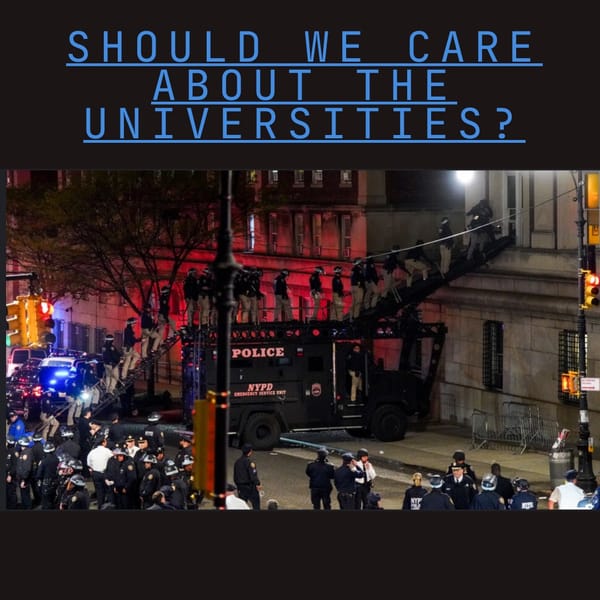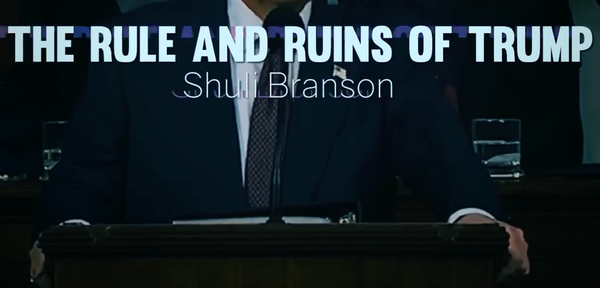"Liberation Day" is Almost Here

Yesterday, on March 31, Beijing announced that China, Japan and South Korea would pursue a collaborative strategy to respond to US tariffs. It can be hard, during the rapid-fire changes of the global far right power grab, to reflect on just how unimaginable a strategic anti-US economic alliance between those three countries would've been even six months ago. But in a few short months Donald Trump has overturned the American global trade consensus that took long careful decades of war, power projection, trade deals, bribery, strongarming, domestic political interference and ideological control to build, such that Tokyo and Seoul are not only willing to align with one another in opposition to US policy, but to do so with Beijing, at least for a photo-op.
If Trump gets his way, today, April 1st, will be a strong candidate for future historians to name as the last day of the US-dominated global economy. Because tomorrow, 'liberation day', as he has been calling it, will see the implementation of extensive tariffs on almost every country on Earth. If starting a trade war with every single country at once seems like a disastrous foreign policy decision, well, it is also really really bad economic policy. It will lead to almost instantaneous stagflation at home, throw much of the world into arbitrary recession, and could lead to much more severe crises as stock markets, supply chains and international trade programs collapse all at once.
It's so obviously suicidal, in fact, that the capitalists convinced themselves that his obsession with tariffs on the campaign trail was just hot air, and they signed checks to his campaign believing their influence would be enough to insure cooler heads would prevail, that he would extend the tax cuts but not actually do the tariffs. This explains the cycles of panic and normalization that have overtaken the stock market, economic press and foreign policy experts, who are used to serving an imperium responsible and responsive to much more than just the man at its head. But alas, King Leer doesn't want a stable regime, he wants everyone to pay for their insults, he wants revenge, and if that means everyone burns with him in one great final maelstrom, sobeit.
And I understand the finance people meeting the uncertainty with cope. After all, Trump withdrew some of the tariffs very quickly last time, and he lacks the fortitude for a real fight when it damages his popularity or the lines go down. But by all appearances they've been building internal consensus within the administration for a crash. Treasury Secretary Bessent has been going out on the finance shows saying "don't worry it's gonna be normal", but not giving any real details. Administration lackeys are out here tossing around numbers like "600 Billion dollars in revenue" which would mean across the board 20% tariffs on all US trading partners: not the most apocalyptic scenario, but still pretty damn bad. And at this point it may not even matter: flight bookings from Canada to the US have dropped by 70% over the last few months, foreign students are deciding not to apply or take positions at US universities, while Canadian, Danish and Mexican businesses are already engaging in an informal but widespread boycott of American goods.

One thing that's particularly cruel about these tariffs is that the more closely allied with the US a country is, the more fucked that country will be by them. Much like how universities giving Trump everything he wants doesn't lead to him restoring their funding, previously subservient regimes in Taiwan, South Korea, Canada, Mexico, Central America and Colombia are gonna get hit much much harder than geopolitical rivals like China, Iran or Russia.
Despite being the world's largest exporter of goods, China has spent the last two decades focused on creating a robust domestic market: exports only make up 20% of Chinese GDP. In contrast, Taiwan's economy is 60% exports, while South Korea, Mexico and Canada all hover between 30 and 50%. And while the US is China's largest trading partner, the US only purchases 15% of Chinese exports: China has an extremely diversified export market. In contrast, the US takes 35-50% of Central American and Colombian exports, and a whopping 80% of Mexican and Canadian outgoing trade. If the tariffs are anything like what he's threatened, it will likely throw all of North America into an instant depression.
And while the EU as a bloc is slightly less vulnerable to these tariffs–which isn't to say they wont hurt–the US is simultaneously withdrawing foreign aid and defense spending that makes up a core pillar of EU governmental budgets and strategic posturing. Only weeks after Trump's Ukraine realignment, Germany passed a bill sending military spending skyrocketing to 3.5% of GDP, billions and billions of Euros to be spent on their armed forces, paving the way for the rest of the EU to similarly re-militarize. "European nations dramatically increase military capacity" is the first sentence in most of history's ugliest stories.
Trump's withdrawal from NATO commitments is, of course, a major boon to Putin, who has in response endorsed Trump's imperial desires for Greenland, and a strategic and personal affinity between the two is undeniable. But contra the blue-anons who insist that Trump is a Kremlin plant, he is in fact aligned with the entire global far right power grab, one that extends from Modi to Millei to Meloni, from Istanbul to San Salvador. This far right pushes for a dictatorial economic nationalism (or corporate-micro-nationalism, in the case of the Peter Thiel crowd) that equally rejects the US/EU soft-power 'rules-based' democratic order and Chinese state-as-debt-sponge authoritarian-Keynesianism. The fact that Orban and Putin have just been the most effective at defining the movement ideologically doesn't mean the whole plan is unfolding from Budapest anymore than from Moscow.
While this nationalist realignment may serve Putin's ambitions to rebuild the Russian Empire, in the long term it is most advantageous to the CCP. Our opening vignette of Japan and South Korea getting more friendly with Beijing is likely to appear an apocalyptic image in Taipei. Indeed, shortly after that photo-op it turns out China launched military drills around Taiwan. As long as South Korea and Japan are within the US sphere of influence, they provide a brake on Chinese imperial ambitions – this balance was of utmost geopolitical importance to neocons and neoliberals alike.
Taiwan, as the producer of the world's most complex microchips, is a strategic center of advanced technological economies, and that doesn't look likely to change anytime soon. Capitalists can move a factory making car headlights or oven doors easily enough, as the last fifty years have amply shown, but nanometer-scale semiconductor installations are so sensitive and site-specific that the processes approach the miraculous. Evolved through years of extremely localized and precise decision making, built around atmospheric conditions, factory specifications, particular robotic processes, and the expertise and institutional knowledge of a handful of engineers, these factories are, if not quite irreplaceable, as close to it as industry gets these days.

China successfully colonizing Taiwan would likely represent a final victory in the tech race between Shenzhen and Silicon Valley. Biden tried to hedge such an outcome with the CHIPS act, but the idea that the US could catch up to Taiwan in microchip production was somewhere between an extremely ambitious, risky industrial policy and a pipe dream. None of which matters now anyway, because the US tech oligarchs preferred to go all in on the AI bubble play, and anything the previous administration did is anathema to Trump, who gleefully rips apart any Biden moves and pursues as near a fully contrarian policy as possible.
Beijing has been not-so-quietly relishing the US' ongoing imperial suicide, dispatching experts, captains of industry and government representatives to financial press, trade gatherings and international conferences touting the corporate freedom of China's special economic zones and the generous terms of its growth-focused state policy. I'd be shocked if there are any multinationals in the US that aren't at least drawing up plans to expand their office footprint in the Pearl River Delta. Musk and Trump meanwhile ironically make the once unimaginable process of a major US company pulling up stakes more easy for boards to envision, as they pressure corps to relocate HQs and financial bases from blue states like Delaware, California or New York to Texas. (Just yesterday Trump's Truth Social became the first 'major' company to be listed on a new Texas stock exchange.) If you're already leaving Wilmington, why stop at Fort Worth?
But these less and less subtle victory laps in Beijing mask a deeper anxiety. Because China has just barely pulled itself out of a recession, caused by the combined catastrophes of the COVID pandemic and the collapse of consumer spending when its "construction boom" reached its natural limits. That boom was the basis of the domestic market growth mentioned above, and contra the anachronistic American image of China as a land of sweatshops and factories, an image little changed since the 90s, China has outsourced a sizeable majority of its material extraction, basic, light and heavy industry to Africa, Vietnam and the rest of SE Asia.
In fact, China basically speedran the USA's post-war development, becoming a services dominated, middle-class property-owner debt-driven consumption economy in about 20 years instead of the 50 or so it took over here. The backbone of this growth was China's capitalist class, lead by the CCP, more or less paving the entire South East of the country. Cities sprang up out of hamlets overnight, built by brutally exploited seasonal migrant labor from the Chinese interior and West. Peasants and ethnic minorities with rural hukou spent a few months at a time living in flimsy hammock-filled barracks building concrete condo towers, only to get deported back out so the overwhelmingly Han urban middle classes could come in and speculate on real estate values.
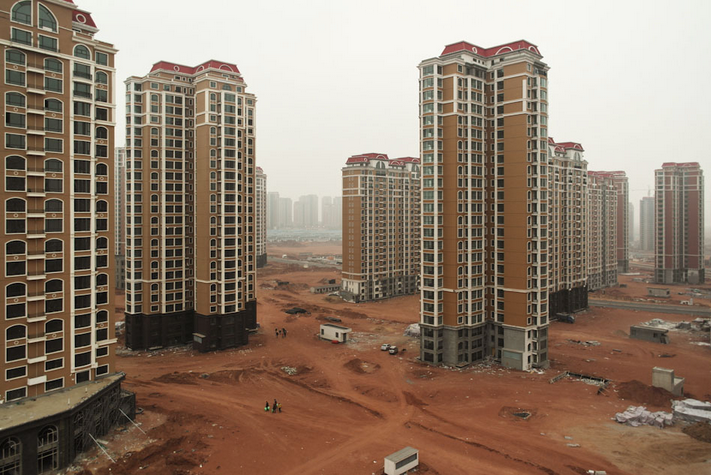
(The anglophone left's analysis of colonialism, understandably built as it is upon European models of extractive African colonialism and settler colonial nation-states, often misses the implicitly colonial nature of the state itself. This can leave western anarchists and leftists with a very poor understanding of the internal-colonialism dynamics of multi-ethnic empires like China, India or Russia, leading to obscenities like socialists denying the Uighur genocide, supporting Russian expansion West or claiming that states whose entire economic structure is built on internal colonial violence are in fact anti-imperialist because of their relationship to the US)
All of this building was financed by cash flow coming in from the export sector, where prices were kept low by the aggressive accumulation of US debt by the CCP. And while Beijing has been drawing down its hoard of US treasuries since 2018, the government still holds $750 Billion in US debt.
So while China looks to benefit in the long run, they're hardly out of the woods, and a severe collapse of US consumption and imports or the value of US bonds – a scenario that Trump and Musk each nearly initiated a few times just by posting last month – would be devastating to the Chinese government, and might blow a budget hole they couldn't simply finance or repress their way out of. The CCP is balanced on a knife's edge: if they can make it through this moment of realignment they will emerge the undeniable leaders of the global economy, but...and this is where all this has been building to...they might drown together with MAGA in a sea of proletarian rage.
Because while Trump looks to 'liberate' the US from foreign trade imbalance, he will actually be liberating the US working class from the last of its commitments to this settler-colony. The simultaneous phenomena of rising prices, collapsing Social Security, massive lay-offs, union-busting and service denial is already causing widespread suffering and anxiety, and will result in a country full of people with nothing left to lose. But they are carrying out this mass attack on civil society and activating the middle classes at the exact moment they're also infuriating their base, alienating the military, and confusing their militants with whiplashy policy shifts.
While this Trump administration has been laser focused and surprisingly effective at ripping apart government departments and building a one-man one-party dictatorship, the right's street forces are largely demobilized. They've got nothing on the ground equivalent to Q-Anon, the Alt Right, or even the Tea Party. That is not a permanent state of affairs, nor is it meant to imply that the currently existing fascist forces don't remain extremely dangerous, but it is a fact that, at the moment, they lack momentum or mass character.
What the fascists do have in hand is the media. That media is obscuring the size of the current wave of anti-Trump protest in the US, but a huge percentage of professional and middle-class folks are up in arms, going to protests and organizing. The protest wave right now is significantly larger than it was even at the same moment in 2017, during the airport shutdowns: the scope is massive, but outside immigrant struggles on the West coast it's mostly white led.
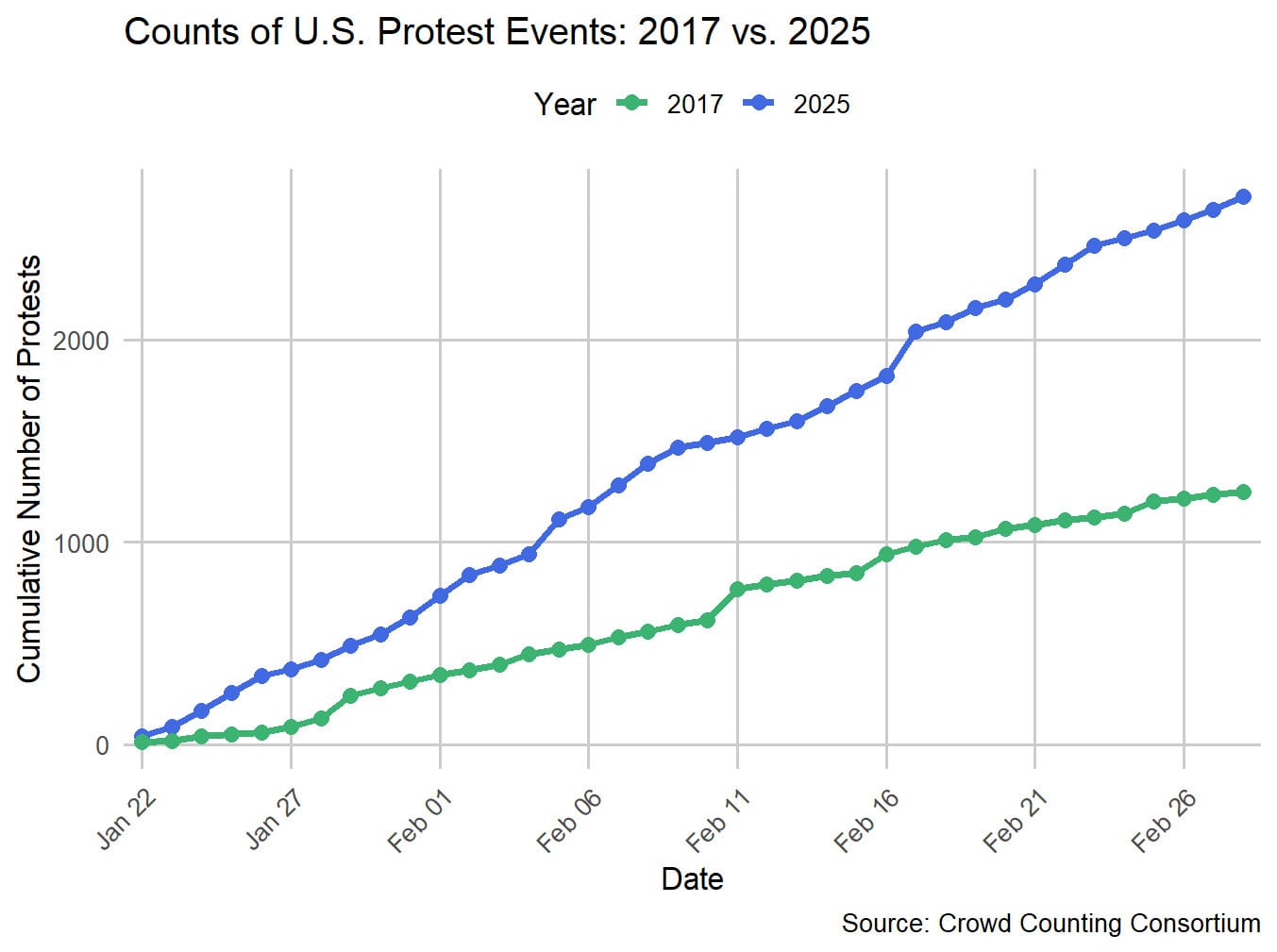
Activists are predominantly engaging through the Palestine repression fight, which makes a lot of sense– student protestors getting disappeared in broad daylight by plainclothes forces is exactly the symbol and sign of fascist dictatorship it's being treated as, and we need to defend our movements. But these arrests and deportations are highly spectacular and resource intensive – at the moment there is nothing "mass" about their repression, and the Trump regime is relying on intimidation, compliance and spectacle. You can see their helplessness in the constant chest-beating over how they're going to punish #TeslaTakedown protests, calling acts of anti-cybertruck vandalism terrorism, but the absence – at least so far – of even local police departments carrying out mass arrests or violent crackdowns.
Still, radicals and the broader working class are extremely wary of following white liberals into the streets, as they are right to be, having already been living under the fascism of mass incarceration, organized abandonment and police violence long enough that, beyond immigrant communities, the new administration's violence hasn't been novel enough to push the people into the street.
That is about to change. Anecdotally, social security payments are already starting to be late, for the first time in the department's history, and the website has been going down repeatedly. Section 8 vouchers are getting cut. Things are about to get extremely material for us, and extremely ugly. This is not good, but it is a fact. There are a lot of lit fuses currently running into this powder keg.
The simple fact of things getting worse is never sufficient to produce resistance: if it was, capitalism would've been overthrown dozens of times already. But the US working class is relatively organized at the moment: it's only been five years since one of the largest uprisings in world history, when we had this exact same motherfucker hiding in a bunker underneath the white house. Nothing has changed materially to buy us off, or pacify us, other perhaps than the disappointment of how little was gained. And though the Palestine solidarity and encampment movements failed to generalize beyond activists and students, from 2011-2020 there was a wave of struggle, organizing and strength building unparalleled since the sixties.
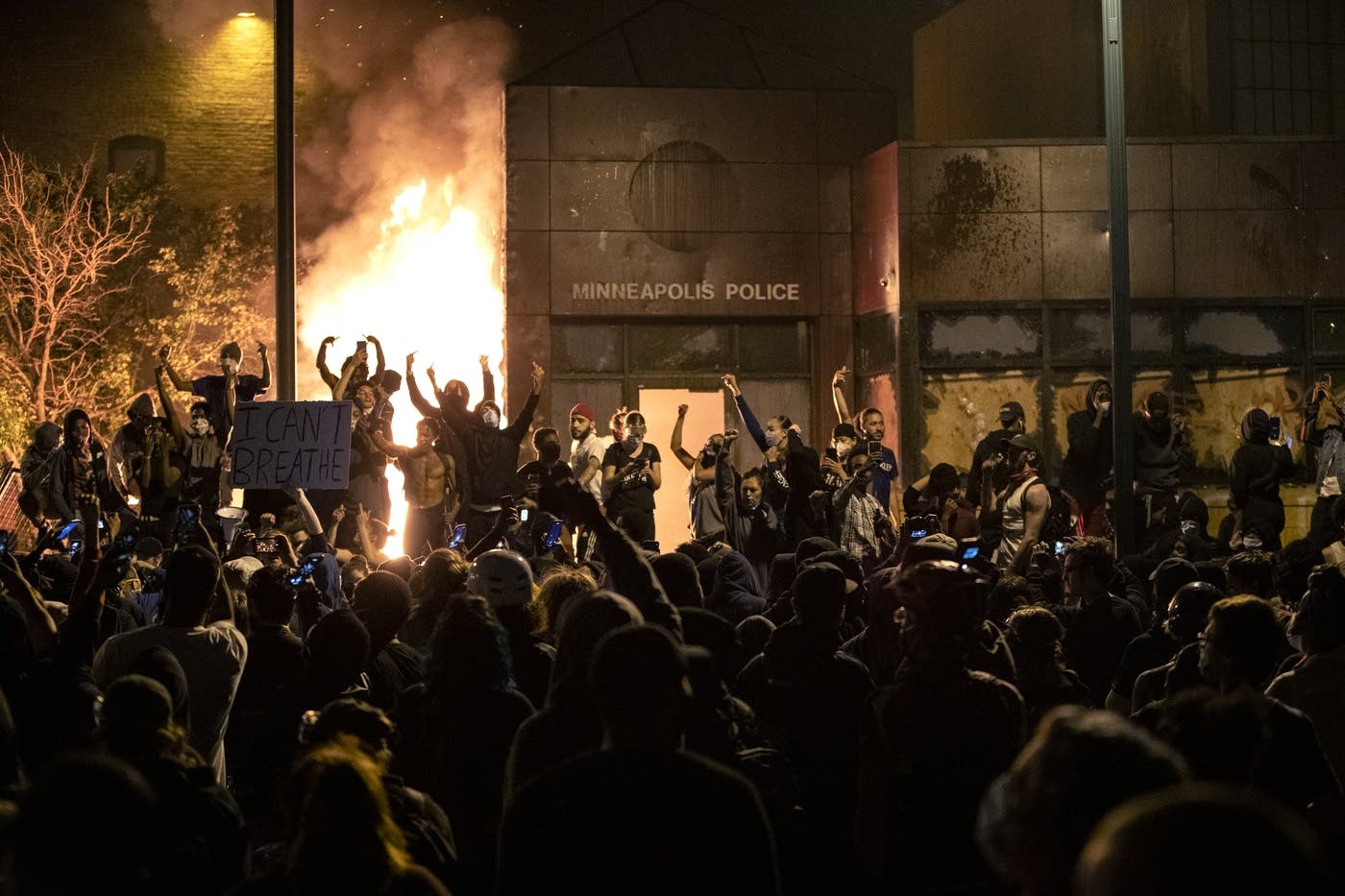
As we entered the first Trump admin, the winter of 2016-7, the call went out for folks to "join an org", to recreate a moribund radical left made up of alphabet soup national party-cults and endless marches to nowhere. But the response to the second Trump admin has looked much more consciously and directly focused on mutual aid, decentralization and building local power and resilience. Those kinds of material power and communal organizations are harder to quantify and measure, and so it's hard to know how widespread they actually are. But they are also, rather than paper membership activist orgs, the kind of things that can turn a protest movement into a revolutionary transformation. (See, for example, the Underground Railroad, the soviets of 1905 and February 1917, the workers' councils in Germany 1918 or Shanghai 1927, the Korean People's Association in Manchuria, 1928-1930, etc. etc. etc.)
And people fucking hate Elon Musk. Watch these liberals in the audience of The Daily Show in 2025 holler and cheer for a montage of Teslas on fire. Luigi Mangione remains a folk hero and beloved figure. The country is ready for more than just marches.
While the extreme violence of Tiananmen, the censorship and repression of civil society and the dramatic growth of a Chinese middle class have combined to keep a lid on the Chinese proletariat for decades now, the ferocity of the 2019 Hong Kong movement, as well as the anti-996 and lying flat anti-work movements in the mainland indicate things may be more restive than the recent party congress would like to admit. If the US economy were to not just wobble, but to really begin to collapse, the reverberations could easily unshackle the world's largest working class.
As the US regime has indicated it intends to accelerate as fast as possible into the coming brick wall, the Chinese state sits almost alone atop it, hoping neither they nor the wall collapse from the blow.
For all these reasons, a war of expansion to juice production, supercharge patriotism, and justify expanding repression and extending state credit may be as irresistible in Beijing as it clearly is to MAGA. And while Trump's life experience as a failson, landlord, bully, coward and rapist means he prefers to only take on conflicts where the deck is heavily stacked in his favor, such as in Canada or Greenland, he may not be able to resist a call to "protect Taiwan from Chinese aggression", especially if his popularity numbers continue to crater.
If this does turn into a major war, it's going to look as senseless and confusing in hindsight as World War One. This would be pure imperial-war-to-get-out-of-domestic-crisis, although in this instance the crises will have actually been successfully if narrowly avoided by the capitalists only to be arbitrarily re-instigated by a sundowning landlord.
In other words, we sure look headed for a global capitalist conflagration and the question is if the flames will be revolution or war, or both. If I had to guess right now, I'd say both. But the support base for Trump is extremely narrow, and extremely top heavy, and if he leans into the tariffs and liberating the US from having an economy, it's not hard to imagine a scenario where neither the military nor the capitalist class raise a finger to save him. In which case it would be up to DHS, local police and self-deputizing shit heads to put down an uprising.
Millions are in the streets in Turkey, Indonesia and Serbia. Another global wave of struggle is crashing. Here on Turtle Island the weather is getting warmer. We face far right regimes because capital has no other answer to last decade's movements. We are in the middle of an era of revolution, war and collapse. Anything and everything is possible.


